Pandebonos are a traditional Colombian type of bread. They are salty and chewy, made primarily out of tapioca (yuca) starch and a salty fresh cheese called queso costeño. Here you will find a traditional recipe and a variation that is called pandebono con bocadillo (pandebono stuffed with guava paste). Pandebonos are delicious for breakfast or as a snack. This recipe is naturally gluten-free.
Haz clic en Pandebonos Colombianos para la receta en español.
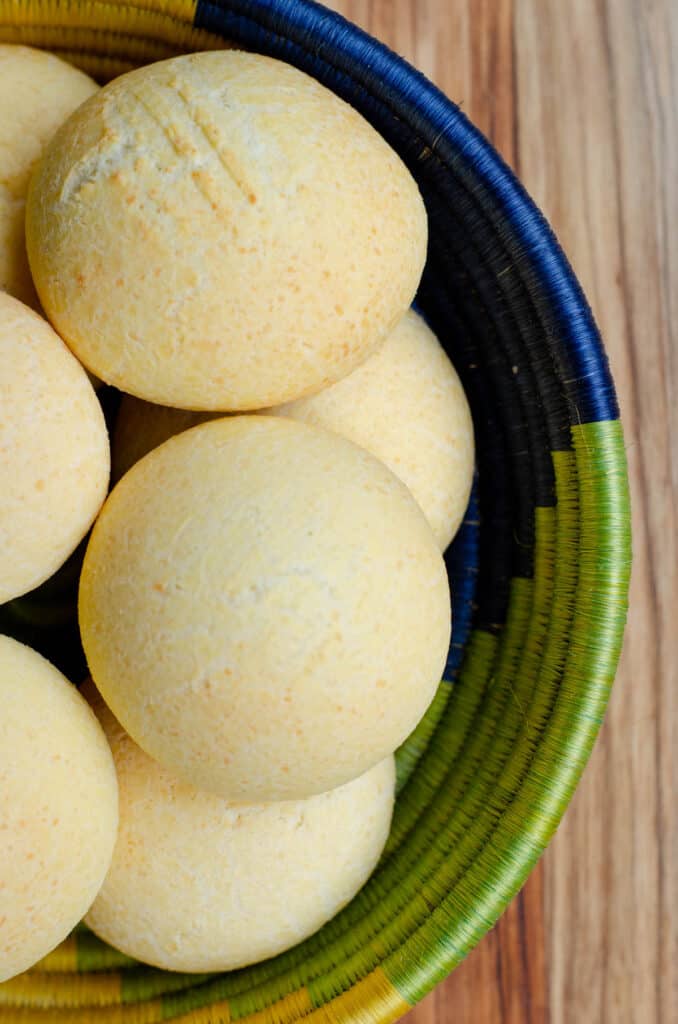
Colombian Pandebonos (Yuca Cheese Bread)
Pandebonos are one of Colombia’s many traditional types of bread. The main ingredients are fresh and salty cheese called queso costeño, and tapioca (yuca) starch. Pandebonos are slightly salty and chewy. Sometimes they come stuffed with bocadillo (guava paste). The contrast between the sweet guava and the salty pandebono is delicious. You can find pandebonos all around Colombia and they are great for breakfast, or as a snack with cold avena.
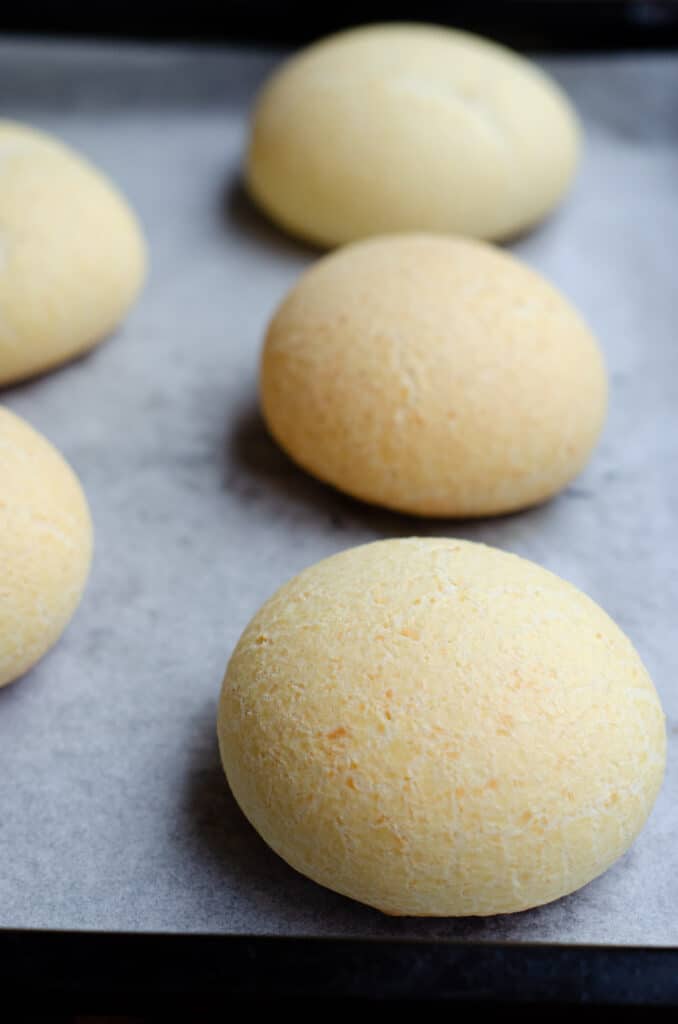
Difference between pandebonos, almojábanas and pan de yuca
Pandebonos are not the only type of cheesy bread in Colombia, and the difference between them confuses many people. The difference between these types of bread lies in the type of flour or starch used, and the type of cheese.
Almojábanas: contain cornmeal and a white cheese called cuajada, or queso campesino.
Pan de yuca: contains tapioca (yuca) starch and queso costeño (fresh and salty tasting cheese), but no cornstarch.
Pandebonos: contain tapioca (yuca) starch and cornstarch, and queso costeño.
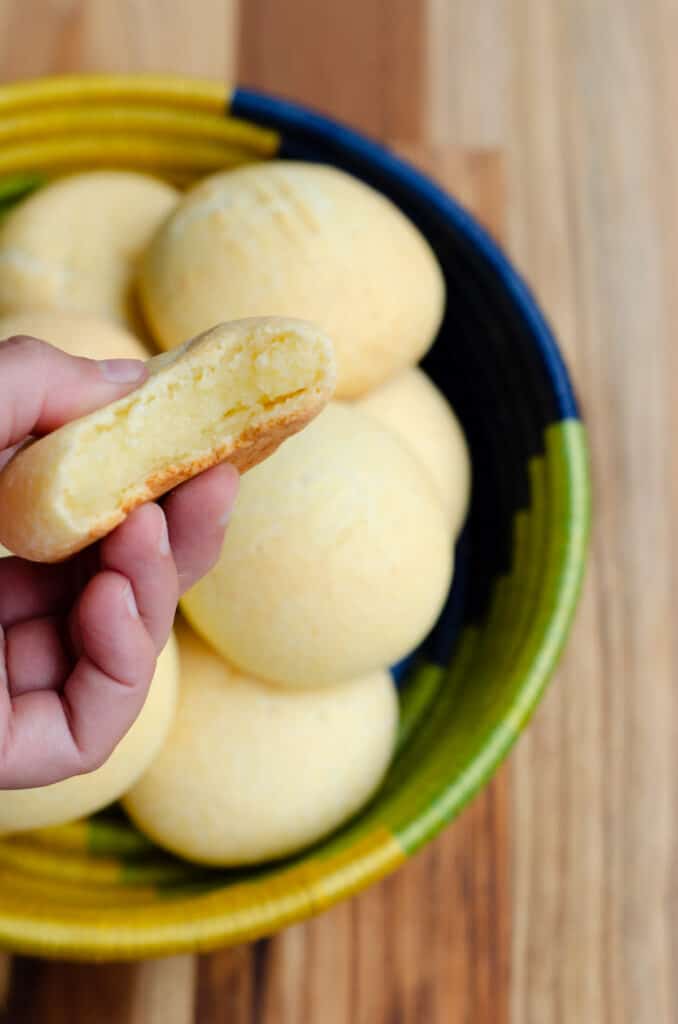
Yuca, cassava, manioc and tapioca
Below the recipe, I give an elaborate explanation about yuca, and the flour/starches made from the yuca/cassava plant.
Ingredients
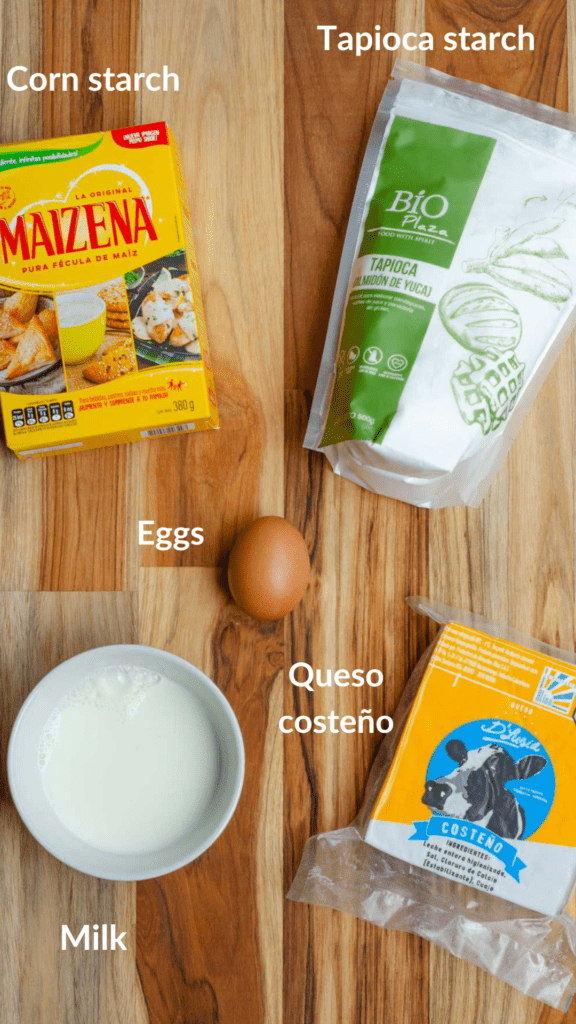
Queso costeño The traditional Colombian recipe calls for a local cheese called queso costeño, which is a fresh, white, and salty cheese. If you can’t find this cheese, replace it with a mix of feta cheese and queso fresco. Check out this recipe for exact measures.
Tapioca starch is sometimes also called tapioca flour or cassava starch. In Spanish it is called almidón de yuca. Cassava flour is something else, for a more elaborate explanation scroll down to below the recipe.
Instructions
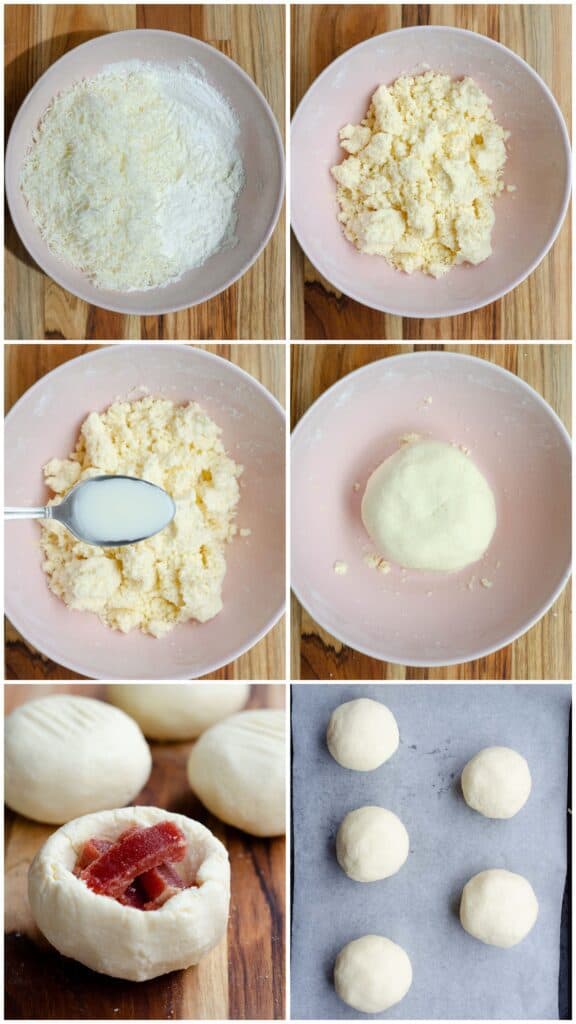
1.Mix tapioca starch, cornstarch, and grated cheese together in a large mixing bowl.
2. Add the whisked egg and mix the dough with your hands
3. Add milk spoon by spoon. The exact amount of milk depends on how wet the cheese is and the size of the egg.
4. Knead the dough with your hands until the cheese is incorporated into the dough. Form into a ball. The ball should hold its shape but it can’t be overly wet.
5. Divide the dough into 5 balls. If you are filling the pandebonos with guava paste, shape the balls into a cup, add guava paste, and shape them into balls again.
6. Place on a baking tray covered with parchment paper and bake at 200 degrees Celsius (400 Fahrenheit) for 20-25 minutes, until they are slightly colored.
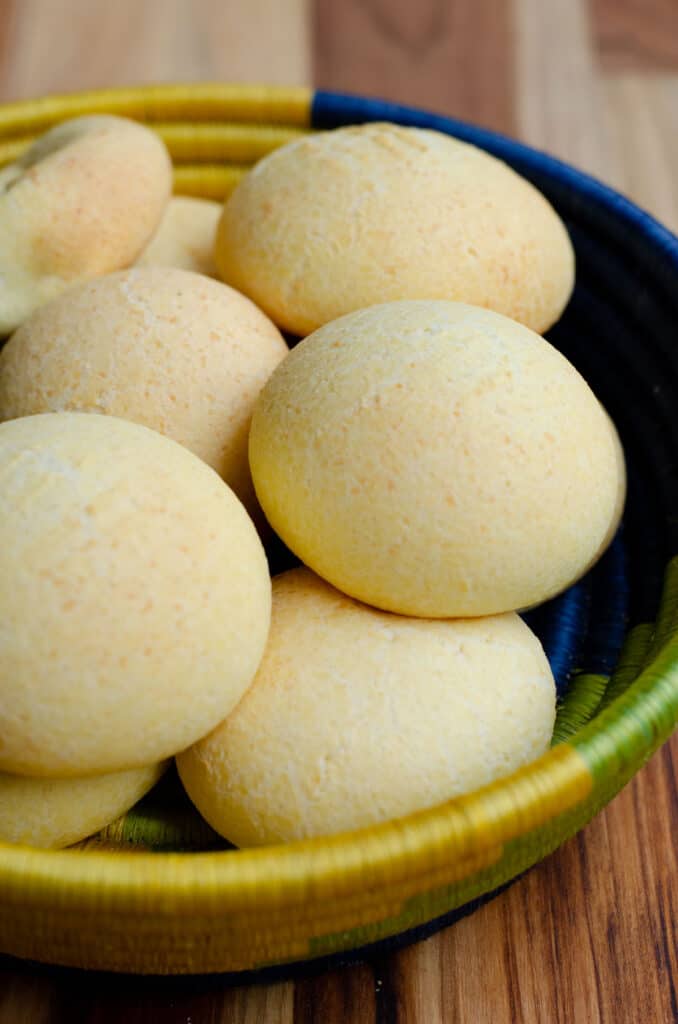
Pandebonos with bocadillo (guava paste)
A variation of traditional pandebonos is to fill them with bocadillo (guava paste). The contrast between the sweet guava and the salty dough is delicious. You can buy guava paste in Latin American stores, or make it yourself with this recipe.
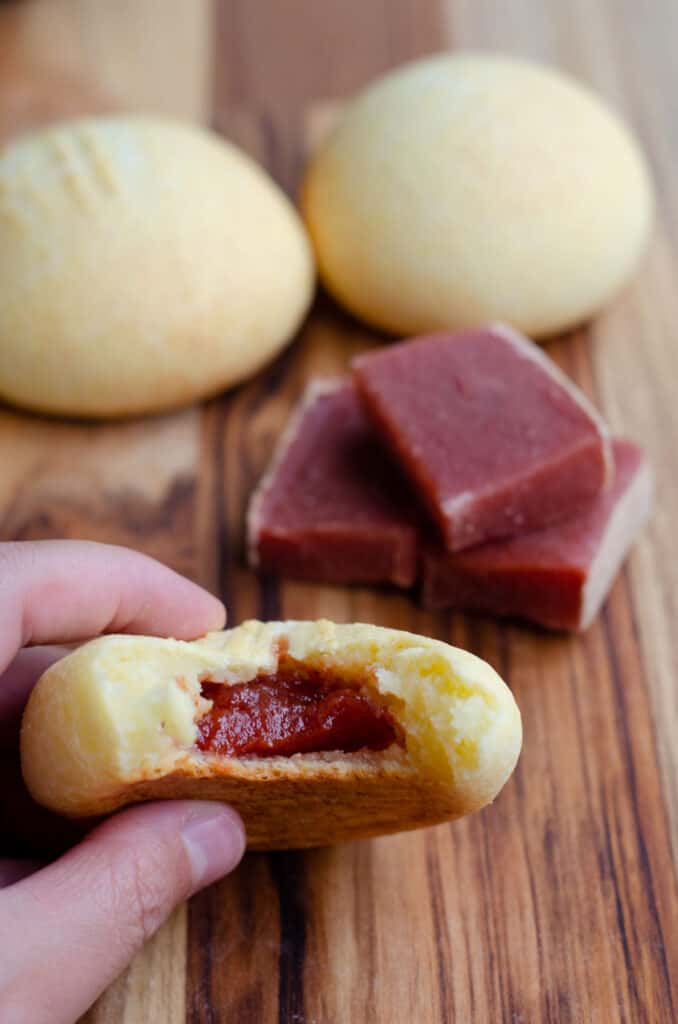
You might also like
Almojábanas (Colombian Cornmeal Cheese Bread)
Colombian Vegan Oatmeal Drink (Avena)
Arepas Colombianas (Colombian Corn Cakes)
Pan Blandito (Colombian Bread Rolls)
Do you love this recipe? Give it a 5-star rating below and leave me a comment! Or tag @vecinavegetariana on Instagram. You can also pin this recipe now and make it later!
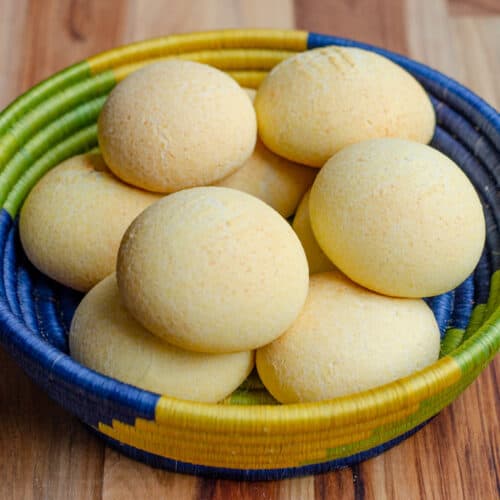
Pandebonos (Colombian Yuca Cheese Bread)
Ingredients
- 80 gram tapioca starch (also known as tapioca flour/ yuca starch/ almidón de yuca)
- 2 heaped tablespoons cornstarch (maizena)
- 250 gram queso costeño, finely grated (see notes for a link of a recipe that uses feta cheese and queso fresco as a replacement)
- 1 egg, whisked
- milk, as necessary (about 3 tablespoons)
Instructions
- Preheat oven to 200 degrees Celsius (400 Fahrenheit). Cover a baking sheet with parchment paper
- Mix tapioca starch, cornstarch, and grated cheese together in a large mixing bowl
- Add the whisked egg and knead the dough with your hands
- Add milk spoon by spoon. Knead well so the cheese is fully incorporated. Shape into a ball.The exact amount of milk depends on how wet the cheese is and the size of the egg. You want a homogeneous mixture, that does not crumble, but it can't be overly wet
- Divide the dough into 5 balls, and place them on the baking sheet with enough space in between
- Bake at 200 degrees Celsius (400 Fahrenheit) for 20-25 minutes, until they have some color at the top
Notes
- Tapioca starch and tapioca flour are the same product. In different countries the product necessary to make these pandebonos has different names. With tapioca starch/flour, you will always have the right product. In many countries cassava flour is something else, for a more elaborate explanation see below. In Colombia, I buy almidón the yuca.
- Feta cheese is a good replacement for queso costeño, because they are both salty cheeses. Check out this recipe if you can't find queso costeño.
- It is important to make firm balls. This prevents them from losing their shape. It can happen that they lose their shape a bit anyway, and turn out flatter than in the pictures. Mostly that has to do with the type of cheese and how wet the dough is. If you don't want to take the risk of them losing their ball/dome-like shape, place the balls of dough in a muffin tin.
- They are best eaten on the same day.
Yuca, cassava, manioc and tapioca
In this post, I talk primarily about yuca, because that is the name used in Colombia. Yuca however also goes by the names cassava and manioc. They all refer to the root of the cassava plant, and this root vegetable is a staple in Latin America, Africa, and some parts of Asia. It is naturally free of gluten and high in carbohydrates. So when talking about the root vegetable itself, the names are interchangeable. But when it comes to the flours and starches made of this root vegetable, it gets a bit more complicated.
Tapioca starch versus cassava flour
Tapioca is the extracted starch from the cassava root. The product is often called tapioca flour or tapioca starch: they are the same.
Cassava flour however is made from the entire root, as opposed to only the starches in the root.
Although often used interchangeably, cassava flour and tapioca flour are not the same product. I must add though that different countries use different names, making it more complicated. If you want to be sure you are buying to the right thing, go for tapioca starch or tapioca flour, and don’t use cassava flour. Or check the Spanish name: almidón de yuca.
The popularity of tapioca starch/flour has increased outside Latin America because it is gluten-free and therefore used as a substitute in baking. Because of this, tapioca starch/flour is easy to find, in bigger supermarkets, online, and of course in Latin supermarkets.
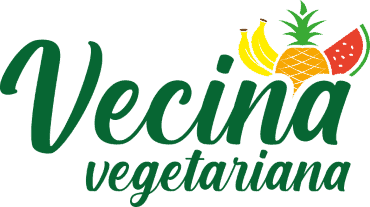
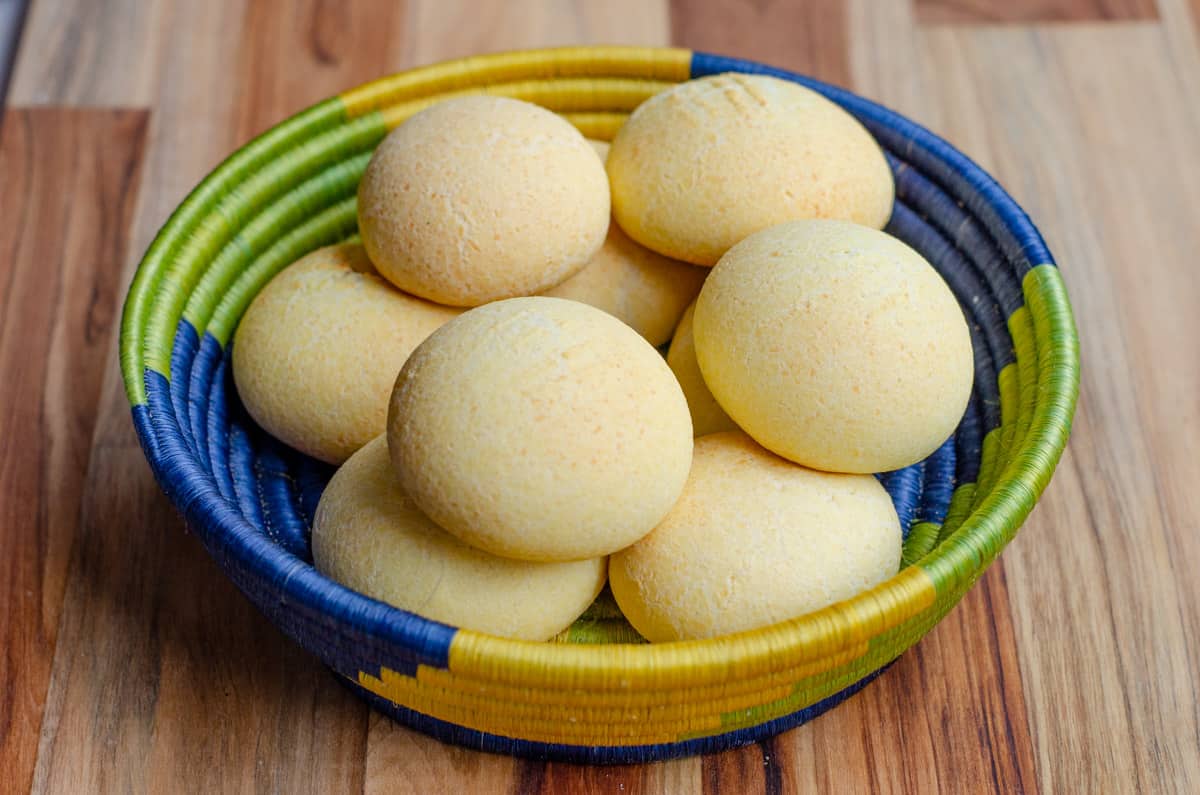
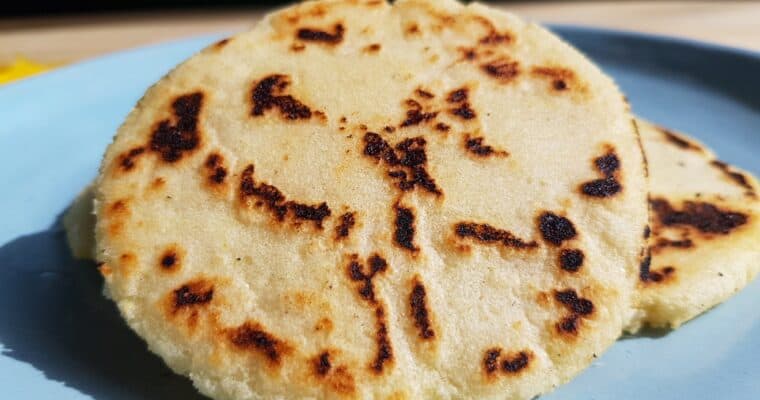
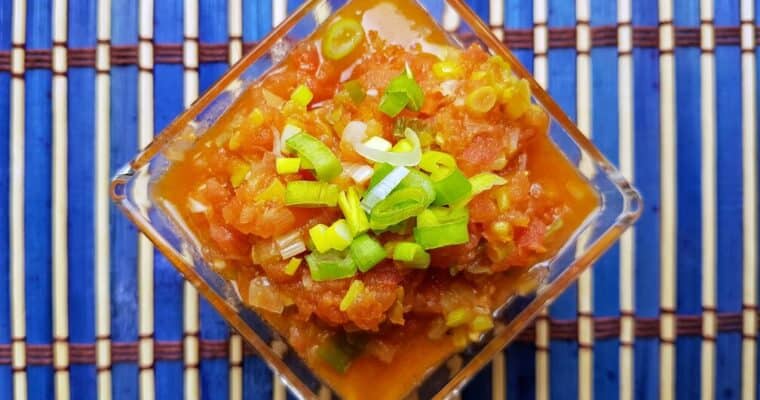
Great article!
Thank you! Hope it was helpful 🙂